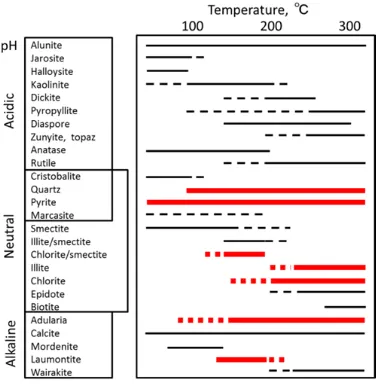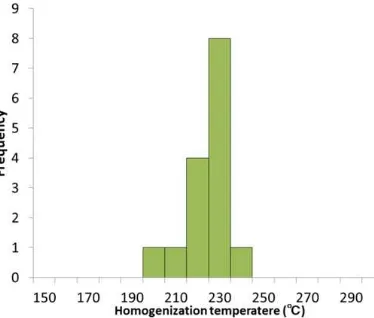Gold Mineralization Characteristics of Cikoneng vein
of the Cibaliung Gold Deposit in Western Java, Indonesia
Sakiko IKEDA1, Rosana M. F.2, Kotaro YONEZU1, Haryanto A.D.1, and Koichiro WATANABE1 1
Department of Earth Resources Engineering,
Faculty of Engineering, Kyushu University, Fukuoka 819-0395, Japan 2
Faculty of Geology, Padjadjaran University, Indonesia E-mail: ikeda-sakiko@mine.kyushu-u.ac.jp
Introduction
The Cibaliung deposit is located in Pandeglang, Banten Province, Western Java, Indonesia. The western part of Java is known as one of the richest gold producing areas, for examples, there are former gold mine in Cikotok, Cirotan, Ciawitali, Cikidang and active gold mine in Pongkor. They are all situated in the Bayah dome, a Teriary-Quaternary volcanic structure, and classified as low-sulfidation type epithermal gold deposits. The Cibaliung gold deposit is approximately 70 km west of Bayah dome and it is located in Honje igneous complex. The deposit has many ore shoots, and the main ore shoots are Cikoneng and Cibitung. All shoots have NW trend. The Cibaliung gold deposit is older than any other deposit in Western Java. This is because younger volcanic deposits such as the Citeluk tuff and the Cibitung tuff most probably prevented this erosion (Harijoko et al., 2007).
According to the previous study, the gold prospects in Cibaliung occur within a NW-trending structural corridor that is 3.5km wide by at least 6km long. Two aligned NNW-trending sub-vertical shoots, Cikoneng and Cibitung, host the currently defined resource within the steeply dipping vein system (Angeles
et al., 2002).
The ore mineral assemblage of the deposit consists of electrum, naumannite, Ag-Se-Te sulfide minerals, chalcopyrite, pyrite, sphalerite and galena. Those ore minerals occur in quartz veins showing colloform-crustiform texture. The temperature of mineralization revealed by fluid inclusion study on quartz in the veins ranges from 170 and 220°C (Harijoko et al., 2007). The exploration estimates approximately 1.3 million tonnes at 10.42 g/t gold and 60.7 g/t silver. The ore mineral assemblage of the deposit consists of electrum.
The previous studies were done only in using outcrop and boring-core; however, samples used in this study were collected from the face in operating underground mine as well. The objectives of this study are to characterize Cikoneng shoots.
Geological background
two oceanic plates, the Indian Plate and Pacific Plate. On the southern part of Indonesia, there is the Sunda Trench which is formed by the northward subduction of the Indian-Australian plate. This subduction introduced island arc during Cenozoic time and has been active since at least Eocene time (Katili, 1975; Hamilton, 1979). This subduction is also generating magmatic arc along the Sumatera and Java island arc that called Sunda Banda magmatic arc. The Sunda-Banda magmatic arc is the longest arc among other magmatic arc in Indonesia and extending from north Sumatra through Java to east of Damar. Java Island is located within the Sunda Banda magmatic arc. There are a lot of volcanic activities along this arc and most of major gold and copper deposits in Sumatera and Java Island is inconection with this arc.
The Western part of Java has mainly two formations. One is Bojongmanik Formation and the other is Honje Formation (Fig.1). Bojongmanik Formation consists of alternating sandstone and shale claystone with intercalations of marl conglomerate, limestone, tuff and lignite. Honje Formation is formed by volcanic breccia, tuff and andesitic-basaltic lava (Sudana et. al., 1992).
Alteration of the host rock
In Cikoneng, alteration minerals are quartz, adularia, clinochlore, chlorite-smectite mixed layer, illite, laumontite, sanidine, and pyrite (Table 1).
Plotting these alteration minerals of the host rocks to the figure, the Cikoneng area showed almost neutral alteration to slightly alkaline alteration (Fig.2). Furthermore, comparing with the contour map of gold grade, illite and corrensite, chlorite and smectite have one-on-one relationship that these alterations have good relationship with gold grade as indicated by CKN2B-N and CKN5-N (Fig. 3). On the other hand, pyrite shows not so high relationship with the gold grade, for example CKN2D-S and CKN5-S (Fig.3).
Ore and gangue mineralogy
In Cikoneng shoot, gangue minerals are quartz and chlorite-smectite mixed layer. Ore minerals are electrum, native silver, pyrite, chalcopyrite, sphalerite, galena, marcasite, argentite, aguilarite and mackinstryite. Gold are coexistent with native silver, chalcopyrite, sphalerite, galena, not with pyrite.
Atomic ratio of Au and Ag of electrum of Cikoneng is determined. Electrum of Cikoneng shoot contains Au about 47.41 at. % to 52.59 at.%. The native silver is also determined from Cikoneng shoot.
The atomic ratio of Fe of sphalerite is also determined. Sphalerite of Cikoneng shoot contains Fe about 0.3at. % to 2.4at. % respectively.
Figure 1. Geological map of western Java, Indonesia (Modified from Sudana et al., 1992).
Figure 2. Condition of ore formation of epithermal system with observed mineral (heavy line) (Modified from Hedenquist et al., 1996).
Table 1. Alteration minerals of Cikoneng shoot.
c / s c ore n site Illite lau mo n tite qu artz san idin e pyrite
KN2 - N ○ ○ ○ ○ ○ ○
KN2 - S ○ ○ ○
KN2 - S ○ ○ ○
KN ○ ○ ○ ○
KN - N ○ ○ ○ ○ ○ ○
Figure 3. Contour map of gold grade with sample point(Modified from Angeles et al., 2002).
Fluid inclusion microthermometry
In Cikoneng, fluid inclusion was found in the quartz vein collected from underground. The homogenization temperature is 200-250°C (Fig.4). The forming temperature is approximately 200-210°C and the salinity is 0.5-2.6 NaCl eq. wt. % (Vanesa, unpublished data).
Figure 4. Histogram of homogenization temperature in Cikoneng.
Au concentration
Quartz vein with clay layer as well as with silver-black band have higher contents of Ag and Au. The clay layer formed by chlorite-smectite mixed layer, but there is the change in content (Reynolds et. al., 1985). Especially, corrensite, chlorite and smectite have one-on-one relationship, has higher Au contents. The temperature of formation of chlorite is higher than that of smectite, so high grade parts are altered with slightly higher temperature.
Conclusion
Cikoneng area, host rock showed almost neutral alteration to slightly alkaline alteration. The Cikoneng vein formation temperature is approximately200-210°C. Corrensite has high Au content in Cibaliung area.
Acknowledgment
References
Angels, C. A., Prihatmoko, S. and Walker, J. S. (2002): Geology and alteration-mineralization characteristics of the Cibaliung epithermal gold deposit, Banten, Indonesia. : Resource Geology, 52, 329-339
Barton, P. B.Jr. and Toulmin, P. Ш (1966): Phase relations involving sphalerite in Fe-Zn-S system: Economic Geology, 61, 815-846
Hamilton, W. (1979): Tectonics of the Indonesian Region: U.S. Geological Survey Professional Paper, 1078, US Geological Survey, Reston, 345 Harijoko, A., Ohbuchi, Y., Motomura, Y., Imai, A. and
Watanabe, K. (2007): Characteristics of the Cibaliung gold deposit: Miocene low-sulfidation-type epithermal gold deposit in Western Java, Indonesia: Resource Geology, 57, 114-123
Hedenquist, J. W., Izawa, E., Arribas, A. and White, N. C. (1996): Epithermal gold deposits: Styles, characteristics, and exploration, Resource Geology Special Publication Number 1
Katili, J. A. (1975): Volcanism and plate tectonics in the Indonesian island arcs: Tectonophysics, 26, 165-188
Marcoux, E. and Milesi, J. P. (1994): Epithermal gold deposit in West Java, Indonesia: Geology, age and crustal source: J. Geochem. Explor., 50, 393-408 .
Milesi, J. P., Marcoux, E., Sitorus, T., Simandjuntak, M., Leroy, J. and Baily, L. (1999): Pongkor (West Java): A pliocene supergeneenriched epithermal Au-Ag-(Mn) deposit: Mineral. Deposita, 34, 131-149
Reynolds, R. C. (1985): NEWMODⓒ, a computer
program for the calculation of one-dimensional differaction patterns of mixed-layer clays Rosana, M. F. and Matsueda, H. (2002): Cikidang
hydrothermal gold deposit in Western Java, Indonesia: Resour. Geol., 52, 341-358
Sudana, D., Santosa, S. (1992): Geology of the Cikalang Quadrangle, Java: Geology Research Development Centre, Bandung, 13

